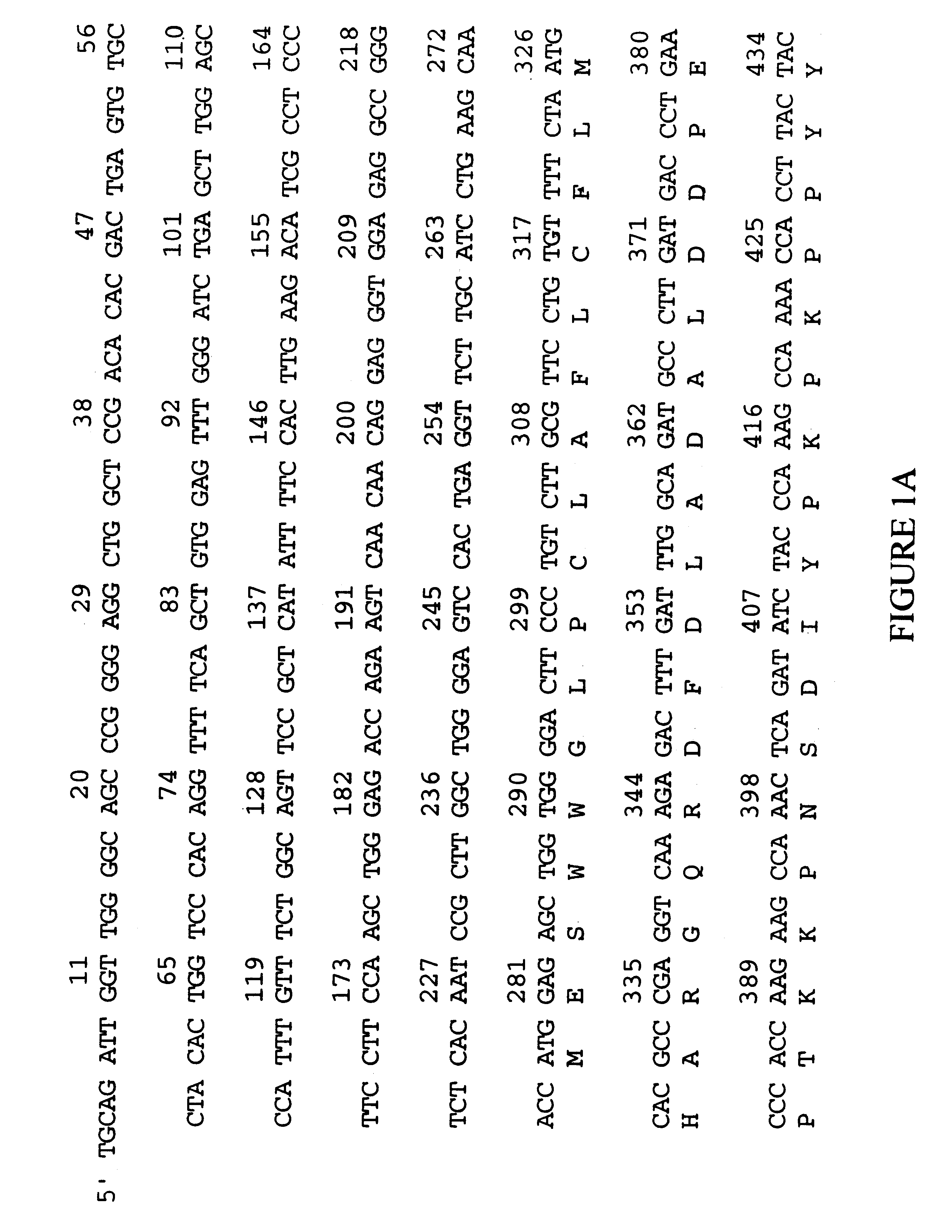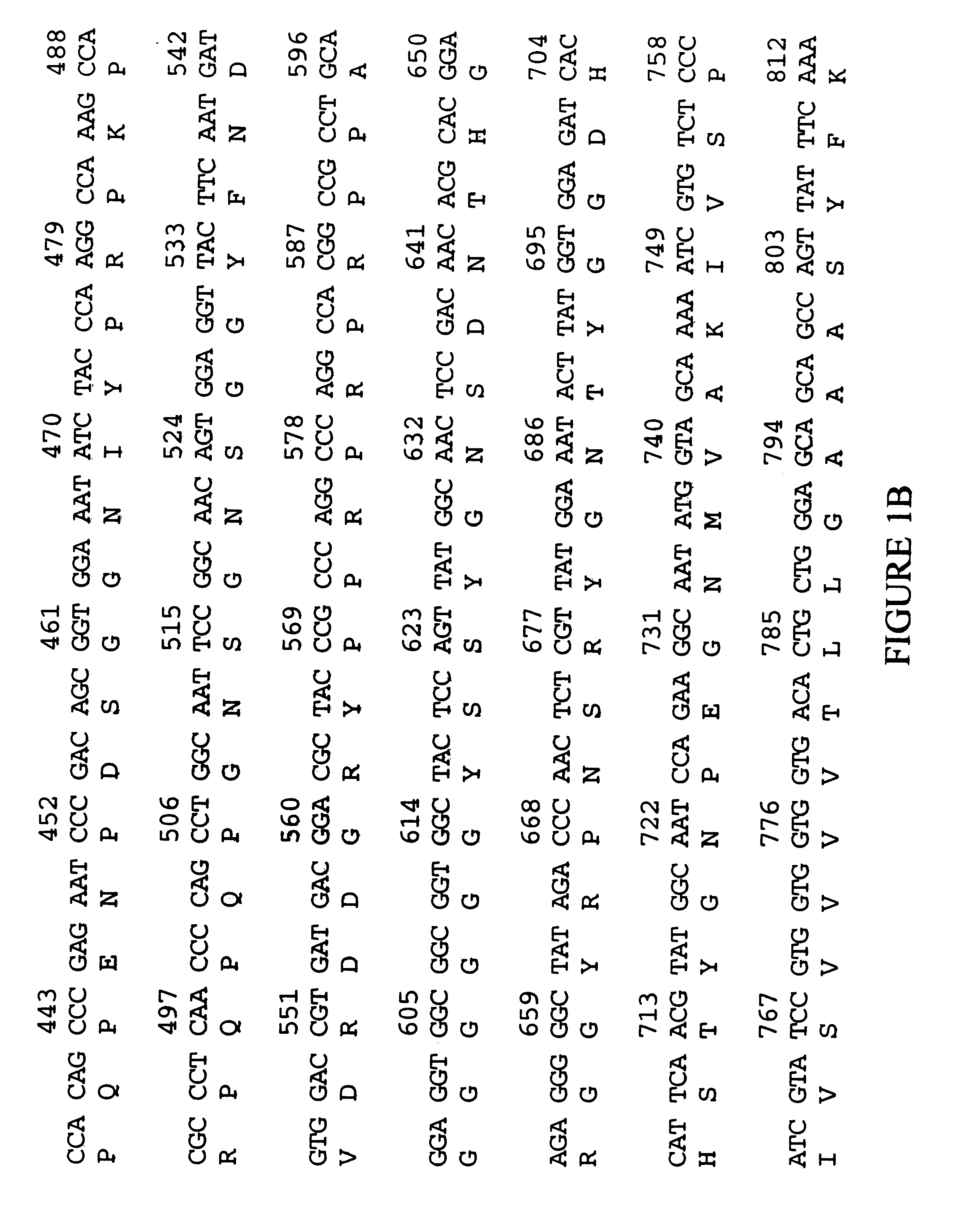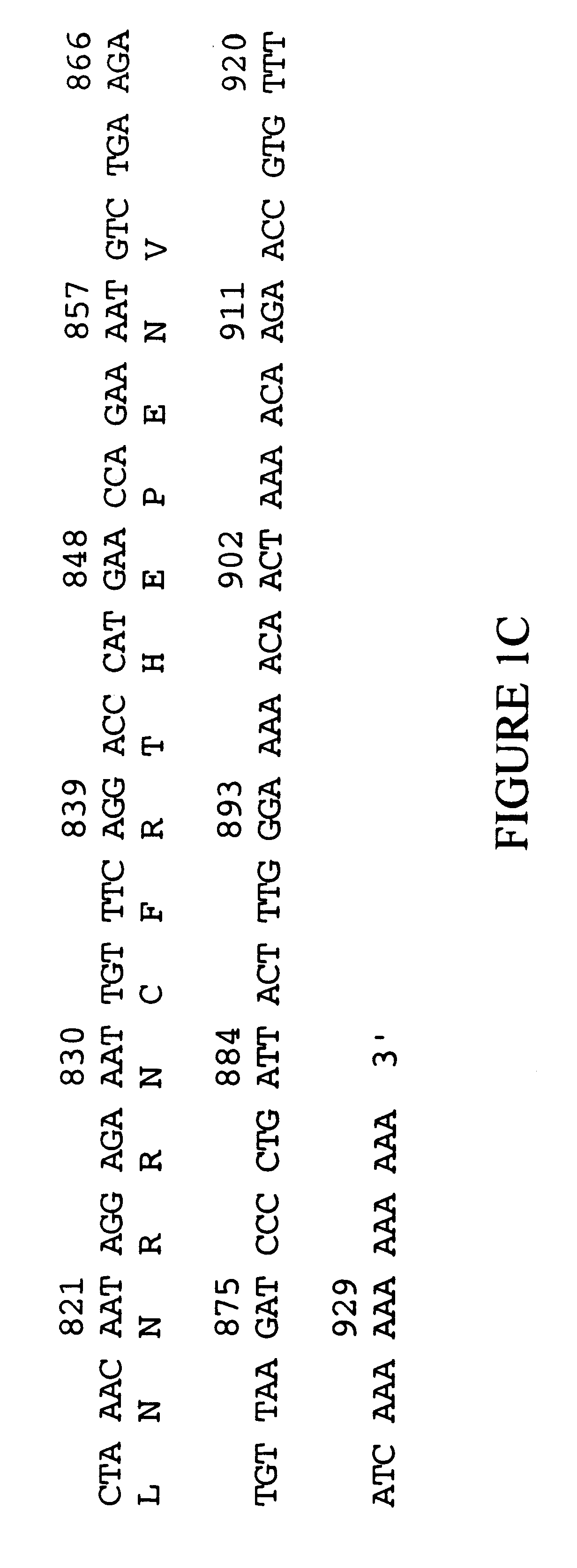Cell surface glycoproteins
a cell surface and glycoprotein technology, applied in the field of cell surface glycoproteins, can solve the problems of failure of x and y to segregate, and achieve the effect of efficient catalyzing endonucleolytic cleavage of sequences encoding
- Summary
- Abstract
- Description
- Claims
- Application Information
AI Technical Summary
Benefits of technology
Problems solved by technology
Method used
Image
Examples
examples
I. Construction of cDNA Libraries
The BRSTNOT05 cDNA library was constructed using RNA isolated from breast tissue removed from a 58-year-old Caucasian female during a unilateral extended simple mastectomy. Pathology for the associated tumor tissue indicated multicentric invasive grade 4 lobular carcinoma. Patient history included skin cancer, rheumatic heart disease, osteoarthritis, and tuberculosis. Family history included cerebrovascular and cardiovascular disease, breast and prostate cancer, and type I diabetes.
The PONSAZT01 cDNA library was constructed using RNA isolated from diseased pons tissue removed from the brain of a 74-year-old Caucasian male who died from Alzheimer's disease.
Frozen tissue from each of the above sources was homogenized and lysed in guanidinium isothiocyanate solution using a Polytron PT-3000 homogenizer (Brinkmann Instruments, Westbury N.Y.). The lysate was centrifuged over a CsCl cushion to isolate RNA. The RNA was extracted with acid phenol, precipitat...
PUM
| Property | Measurement | Unit |
|---|---|---|
| temperatures | aaaaa | aaaaa |
| temperatures | aaaaa | aaaaa |
| temperatures | aaaaa | aaaaa |
Abstract
Description
Claims
Application Information
 Login to View More
Login to View More - R&D
- Intellectual Property
- Life Sciences
- Materials
- Tech Scout
- Unparalleled Data Quality
- Higher Quality Content
- 60% Fewer Hallucinations
Browse by: Latest US Patents, China's latest patents, Technical Efficacy Thesaurus, Application Domain, Technology Topic, Popular Technical Reports.
© 2025 PatSnap. All rights reserved.Legal|Privacy policy|Modern Slavery Act Transparency Statement|Sitemap|About US| Contact US: help@patsnap.com



